Build a Killer Content Campaign By Working Backwards
Every marketer I know has come up with a great topic out of the blue, and whenever that happens, they tend to jump into action right away. They eagerly whip up an informative post and pack it full of value before posting it to their blog.
I’ve done this before – sometimes an idea is so great that it just has to be published and shared. That’s a perfectly acceptable way to fill in the gaps or add something exciting to your current content strategy. It’s a front-end approach to creating content that isn’t always data-driven, but if you’re tuned in to your audience and know what they like, it can produce some good engagement and lead to long-term results.
For the rest of your content, though, it pays to lay the groundwork for a solid strategy. Only about 32% of marketers create a documented content marketing strategy for each of their campaigns, and not having one can seriously inhibit your results.
My ideal approach is to work backwards from a completed vision for a campaign and break it down into individual pieces for every aspect of ideation, creation, and promotion. That makes it a lot easier to assemble the campaign strategy once those parts are completed.
It’s similar to putting a puzzle together by studying the completed picture and then putting the pieces together based on that end goal visualization.

You start by observing the image on the box, and then you examine your individual pieces and mentally map out a strategy for assembling what you have. Some pieces are easier to put into place than others – corners and outside edges – but they’re all necessary for completing the puzzle, and that finished image can help you overcome any roadblocks you might encounter along the way.
Assembling a puzzle without the complete picture to guide you isn’t impossible, but it’s certainly more time-consuming if you have to put together several pieces with little guidance to keep you on track.
That same approach to content campaigns not only streamlines the entire process, but it also guarantees you won’t miss any pieces when you have it fully mapped out. Successful entrepreneurs and leaders often use a similar approach for growth: envisioning the primary goal and working backwards to understand the paths, milestones, and resources necessary to achieve that goal.
Here’s how I start with a “completed,” visualized campaign concept and break it down by working backwards to plan a successful deployment.
The End Goal and Audience Takeaway
Running a full content campaign is very different from publishing a single post. A campaign often includes multiple pieces of content and represents an overall journey that you want the audience to take. At the end of that journey is the one main thing: the big goal.
The goal of a content campaign can be a major takeaway or vital piece of information you want your audience to know. It could be an idea you’re trying to spread, a product, an offer, etc.
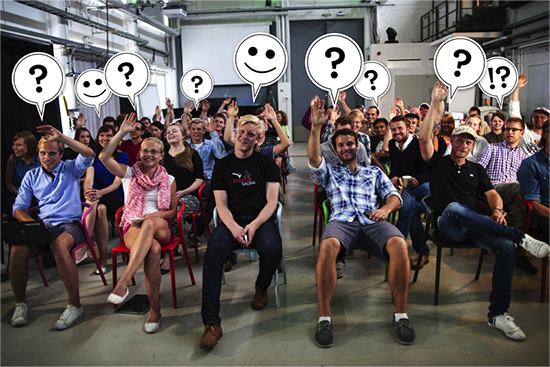
The endpoint for your audience (and for your overall content strategy) should be the starting point of your campaign. Envisioning this endpoint paints the broad picture of your campaign components:
- Who your audience is
- What solution is provided at the end of the campaign
- What kind of relationship is required to get them to the endpoint
- What kind of content is most effective for this audience
- What will keep the audience engaged
- How your reach will be expanded beyond the base audience
- How the base audience will be targeted and discover the content
Who Is Filling the Seats?
You may already have your audience parameters set up if your campaign promotes a product or service, since these are often built around the types of people you’re serving. You may also have a defined audience as part of an existing content marketing strategy.
Even if that’s the case, it’s a good idea to closely examine your audience. For any campaign created by my agency, WebProfits, the team always looks for audience variations or segments that may be more appropriate for a specific campaign.
It would be rare to target everyone in your audience.

If you haven’t defined the audience yet, then this is where you’ll start.
Who are the people filling seats and taking the ride with you? What do the audience subsets look like when they find themselves at the endpoint of your campaign?
Defining and refining your audience should narrow down to the specific people for whom you’re creating the content. Rather than starting with a larger audience base that will eventually be narrowed within the funnel, start with the people who are most likely to be standing by you at the end.
For those most relevant to your final offer, zero in on their trigger points and sticking points by asking yourself a few questions:
- What are their needs?
- What does the content cycle look like for optimal engagement for that particular audience subset?
- How do their needs shift during the buying cycle?
- What is the value they want and need to take away from your offer?
- What is the type of content that will catch their attention?
- What would have the most emotional and psychological impact on that specific audience?
Identifying that audience requires a mix of qualitative and quantitative research. You’ll pull from observations, hard data, and objective testing. The key is getting a grasp on the statistical representation of a specific audience subset and recognizing the nuances of the buyers who will stay with you through the end of your campaign. Those people have different thought processes than your wider audience.
Here are a few ways to get to know that audience:
Connect with current audience members or customers
Few businesses actually take the time to talk to their customers, which is a shame, because they’re ideal resources for building data here. They have done business with you, purchased from you, and are generally pretty accessible, since you already have their contact information.
Interviews can show you the decision-making process that converted them, in addition to which aspects are keeping them engaged. You can gather this information through one-on-one sessions, online surveys, or focus groups.
Go with what works
Your previous marketing efforts can reveal of wealth of information about your target audience. A/B testing isn’t just for conversions; it’s a good way to find out what content frequencies, content variations, and content formats are most effective. More importantly, you can see what kinds of content have been effective at specific stages of the buyer’s journey.
Use progressive profiling
CRM can lend serious power to your content strategy if you leverage the data properly. If you have a CRM that stores user interaction information along with previously downloaded content, then you can analyze this data to uncover trends among your audience that may influence your targeting.
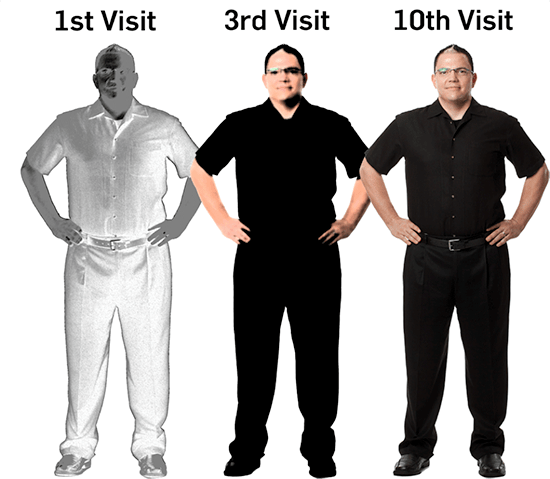
Don’t ignore your analytics
Google Analytics can provide great information and tools for refining your audience and zeroing in on who your new campaign will target. Dig into your analytics to uncover details on:
- The referral sites that most frequently drive in customers
- What type of content is the most common referral point
- How long your audience lingers on specific pieces of content
- How visitors flow through your site
- What pages your visitors typically land on
- What type of content is most popular with returning visitors: infographics, videos, or regular blog posts
Once you have a clear definition of who the audience is at the endpoint of the campaign, then you can map out how to get them there.
The Editorial Pillars – Topic Generation
The content you produce is the meat of your campaign. It serves to draw the audience in at the top of the funnel and assists in qualifying and enticing them through to the final conversion point. Ensuring they’re lured and engaged means fleshing out your campaign with the topics that are important to your audience.
They’ll have a variety of questions throughout their journey, in addition to the most pressing issues that initially turned them on to you at the top of the funnel.
At this point, you don’t want to focus on any specific buying stage. Instead, generate a list of the relevant topics that will draw in your audience and maintain engagement.
If you reviewed your analytics while refining your audience, then you already have a good idea of the topics that will bring the most traffic and engagement. Start with those topics as a baseline, and brainstorm key phrases and basic topics relevant to their needs.
“Look at the list of websites (not social media or search engines) that have sent you the most traffic,” writes Rand Fishkin of Moz. “See what the top 20 to 50 are writing about, to whom they link, and what their writers or founders are sharing on social. Use that intelligence to create content that you can feel confident is up your referral viewers’ alley. Chances are that you’ll be much more informed about the types of stuff that will earn you amplification, links, traffic, and mentions from influencers.”
Don’t think too hard on any one topic; at this point, you’re just generating topic ideas. This list will be used to define your topic research later on.
Whenever I generate a solid list of potential topics, I like to take my research a step further with BuzzSumo.
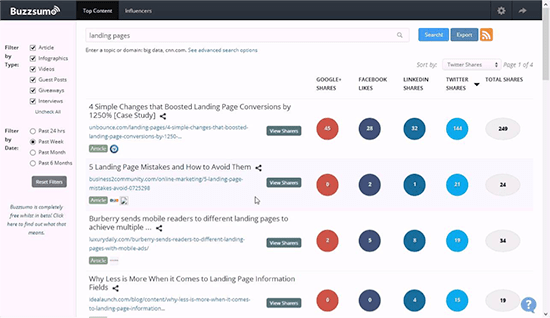
By plugging those topics into BuzzSumo, I can see the most popular articles within those topics based on quantity of social shares. From those results, I generate more targeted topics that have a proven track record of shares and engagement so I’ll be more likely to see great results from my own campaign.
Using this method, you should sketch out your new topics in a spreadsheet. The order isn’t important right now, but be sure to record the sharing data from the relative original topic. You can use this to sort topics later on.
If I’m not sure whether certain topics will mesh well with my audience in spite of a high share rate for the original topic, I’ll do some extra research with a keyword planner. This can tip you off to search volume figures for your new topic idea.
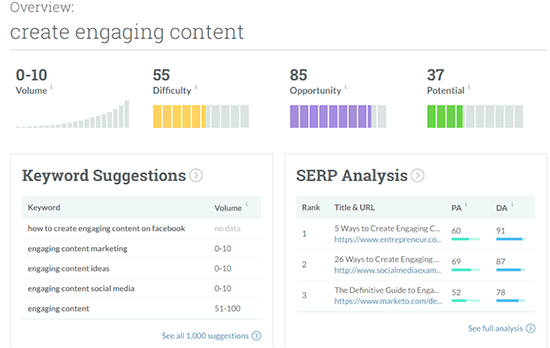
Don’t disregard a topic just because it has a low search volume. If it’s built around long-tail phrases, that topic still might have a lower search volume, but it could have a greater conversion intent.
Content Formats and Channels
The most successful content marketing strategies use a variety of content formats. You can’t just rely on blogs and articles anymore. For many of my campaigns, I’ll include email, images, video, blogs, ebooks, and more to optimize my outreach for a diverse audience.
Your analytics likely tipped you off to which content formats your audience prefers. BuzzSumo can also help you research which formats have performed well for certain topics. You can search and filter by content type, such as articles, infographics, guest posts, giveaways, interviews, and videos.
Now that you have topics sorted out, you can assign those topics to specific formats to make them truly epic.
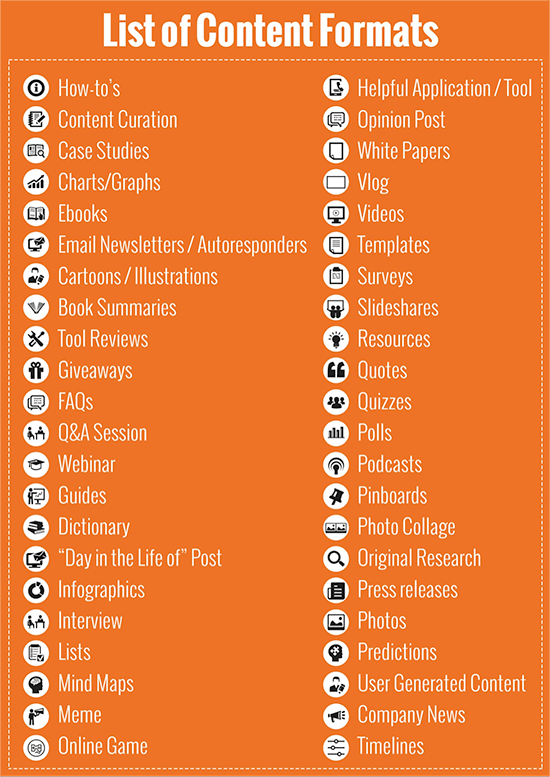
I really want to emphasize the importance of diversity in formats, because your audience doesn’t digest content in the same way, and they don’t use the same channels to find content or answers to questions.
Your audience will reach the end of your campaign thanks to a variety of content, and this is how you define it.
For example, some topics are best suited for visual content, while others will gain the most attention as in-depth blog posts.
In your tracking spreadsheet, list one or more formats that best apply to a topic. I say “one or more” because a topic could be reproduced in several formats to give you the most reach and engagement for a specific point in your campaign.
Don’t get locked into one format for each topic. That will make your campaign as vast as an ocean but as deep as a puddle. Casting a wide net when it comes to content formats can add greater depth to your campaign.
By the Funnel
Not everything is top-of-the-funnel content. Rather than starting out with creating content that attracts visitors at the top of the funnel, instead think about it from the point of conversion. This way, you can map out your content across the entire funnel.
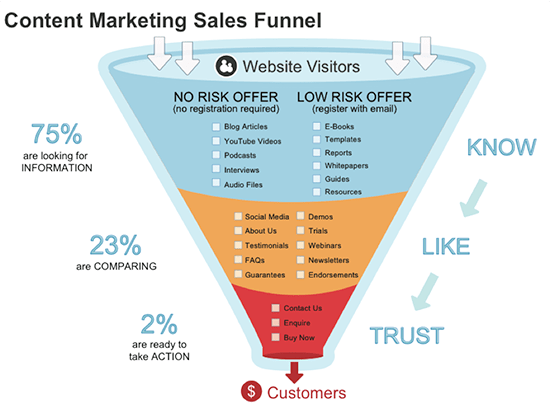
What will be the barriers to bringing them onboard and getting a “yes”? This will help you identify the topics that have the greatest influence over their purchase decisions.
Engagement in the Middle
Next, you’ll want to take a step back into the middle of the funnel. This is where your audience is evaluating their options while you’re actively building a relationship with them. The prospect isn’t quite ready to convert yet, but they are aware of your solution. What topics will address their needs and concerns as they review options and determine whether your solution fits those needs?
Some of the topics you’ve already sourced will work well at the middle of the funnel, and you can expand on those with a little more brainstorming at this phase. Consider what other resources you have available that will urge them on to a final conversion point.
If you don’t have case studies or data-backed material, then plan to create these as part of your campaign strategy.
The middle of the funnel is the critical point with your audience. This is where you’ve provided a substantial amount of value to build a relationship that propelled them forward to a conversion. Allocate topics that give you room to create high-value, comprehensive content.
Take It To the Top
As you climb to the top of the funnel, you arrive at the point where your campaign pulled in visitors organically from around the web – from guest posts, social promotions, and through the social engagement of others.
Your topic list should include plenty of top-of-the-funnel ideas that address the most pressing concerns for your audience. The goal here is to assign topics that capture people’s attention and build authority for you. The primary goal for the content should be establishing trust because this is what will drive your audience deeper into your funnel.
A lot of marketers use a “give it all away” approach by offering a ton of free, helpful content and hiding no secrets in order to show the audience that all the answers they need are in one place, from one publisher.
When you’re determining what content applies to various stages of the buyer’s journey, pay attention to formats as well. Most top-of-the-funnel content is delivered in blog posts and images. Deeper in the funnel, you’ll use more direct and personal formats like email and video.
Content Promotion and Distribution
A majority of your traffic will likely come in organically at the top of the funnel, but that doesn’t mean you should just publish your content, walk away, and hope for the best. The success of your campaign depends on the promotion and distribution plan you create for your content.
Rarely do I promote on a whim after completing my content. I always have some kind of promotion and distribution plan in place as part of the overall campaign.
“Content distribution is what I consider the ‘marketing arm’ of content marketing,” writes Cory Wainwright, Director of Content at HubSpot. “It’s all about making sure the content you create gets found by the widest audience possible.”
If you used BuzzSumo for sourcing content, then you already have access to great information to guide your promotional strategy. Each topic you researched will show you the total shares, as well as share figures divided into major social channels.
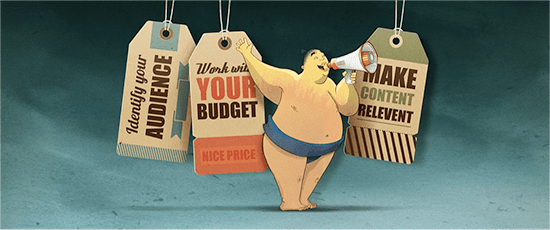
This data can be immensely helpful when it comes to planning how your top-of-the-funnel content will be distributed and promoted once it goes live.
Aside from digging into the individual shares to find influencers who shared the content, BuzzSumo also has its own “Influencers” tab that allows you to search for influencers who are sharing content around specific topics. Narrow.io, a tool I created for locating people based on topic areas, can also help you find influencers who are – at this very moment – discussing and sharing content related to your topics.
By targeting the right channels and creating a promotion plan that includes influencers in topics and fields that have done well, you can get some serious reach for that top-of-the-funnel content.
This is the perfect stage to make sure you have the right resources in place for effective promotion and distribution as well. Here are a few other tools I recommend for content promotion and distribution:
Quuu: Submit your top-of-the-funnel content for inclusion in Quuu’s content-curation network to get it distributed to your relevant audience. Specifically, you want to get it in front of an audience that you’re not currently connected to. This is a low-cost way to dramatically improve the reach of your content through social curation.
Buffer: I love using Buffer to schedule my content. It’s a headache trying to manually schedule posts and remember when they need to go live. Since you’ll be targeting a number of channels, you should use Buffer to lock in those publish times and push out content when your audience is most likely to engage with the information.
ContentMarketer: If you have a list of influencers you want to reach out to but you’re coming up short on contacts, use the Voila Norbert. It can help you find email addresses for the people you want to connect with for leveraging influencer promotion. Pair it up with Mailshake tool for creating outreach emails that bring higher returns from those influencers.
To help you get scheduling down to a science, Buffer published this terrific post on how to time content publishing through various social channels.
A note about distribution: Don’t settle for the mainstream social channels to promote your content. While BuzzSumo might indicate high share volumes on well-known social sites, there are plenty of other places to distribute your campaign content.
Find the places that best match up with your audience, which could include distribution channels like:
- Medium
- LinkedIn Pulse
- Facebook and LinkedIn groups
- Linking to content in Quora answers
- Sharing through StumbleUpon and relevant subreddits on Reddit
- Posting videos to multiple sites, such as Facebook native video, YouTube, and Vimeo
- Sharing visual content to SlideShare, Instagram, Imgur, Flickr, Pinterest, and infographic sharing sites
- Promoting high-value, top-of-the-funnel content via email to re-engage stagnant subscribers
When you visualize the end of the campaign, remember that your wider audience was brought in through highly-diverse content distributed across a variety of channels. By shrinking your distribution, you might risk shrinking your audience at the end of the funnel, as well.
Creating the Content Calendar
“Building out an editorial calendar” probably sounds like a time-consuming and costly process that utilizes some kind of streamlined SaaS offer, but it doesn’t have to be. Still, it’s an absolute necessity if you’re setting up a content campaign because there’s a lot that goes into every stage, from beginning to end.
“A content calendar is a shareable resource that marketing teams can use to plan all content marketing activity,” writes Jamie Griffiths, Inbound Strategist with Manifesto. “The benefit of using the calendar format, rather than just a long list of content to be published, is that you can visualize how your content is distributed throughout the year.”
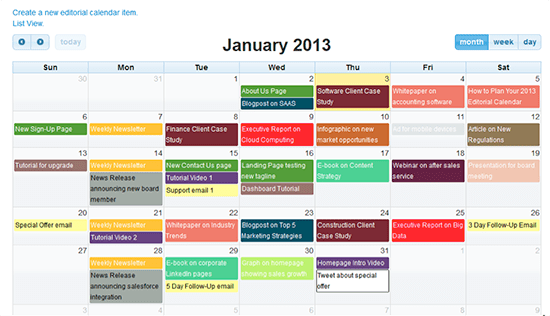
Unless you’re handling all the distribution and promotion for your campaign, you want to have a way to tie everything together and make it easy for your team to do their jobs. Aside from that, a content calendar:
- Establishes dates and deadlines for when content must go live
- Lays out where content will be published and how it’ll be promoted
- Details the format of the content
- Outlines the goal of that content (where it’ll drive traffic and why)
The key to any successful campaign is focusing on quality over quantity, but you still want to fill your days with the publishing and promotion of new content.
Up to this point, we’ve worked backwards from the primary goal and the data has been compiled, which determined the tasks that needed to be accomplished in order to reach the end goal. The editorial or content calendar will help you separate the mess of data, tasks, and goals into something discernible and tactical.
With your calendar, you now have a functional and clear roadmap that shows the initial publication and promotional phase, as well as the subsequent deadlines and promotions all the way to the end of the campaign.
It defines not only your top-of-the-funnel content, but also how you’ll create and deploy middle of the funnel content, including things like autoresponders and added emails.
I’ve tried out several marketing calendar tools, and I’ve found that in a lot of cases, for marketers like you, a great option would be to use a simple Google Calendar. It’s easy to set up, and HubSpot even has a solid tutorial that walks you through creating your own calendar.
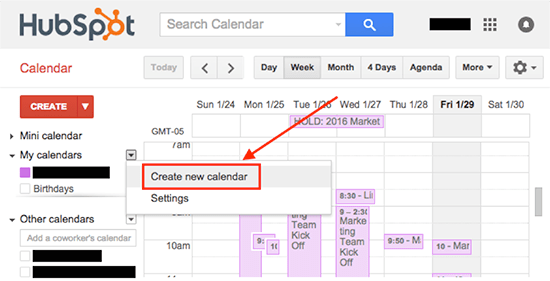
If you prefer more robust content calendar tools, you could try CoSchedule. Project management tools like Basecamp and Smartsheet can also be customized to serve as content calendars for scheduling deployment and monitoring your content.
Content Outlines and Shareable Elements
By now, you have a clear, tactical plan for your content campaign and a vision to help you reach that end goal. What you need at this point is content that will encourage your customers to complete the journey to the goal.
Your editorial calendar should define the order and priority of content production and your established topics to give you the direction you need for your research. Keep in mind that every piece of content you create has a purpose, so build your content outlines around the value for readers in addition to moving them toward the next step.

Three things are a must with every piece of content you create:
- Immense value built around customer sticking points
- Shareable elements with discernable “wow” factors
- Clear and compelling calls-to-action
When you create outlines for your content, focus on those three main points. Offering massive value ensures that your audience stays engaged as they’ll want to learn more. Powerful, shareable elements (key data, facts, influencer contributions, etc.) are important because these can impress and encourage readers to share.
Lastly, the clear and compelling call-to-action ensures that once readers are done reading, they’ll be more likely to take the action you’re suggesting. With your campaign, you want them constantly moving toward that end goal. Every piece of content you produce, at every stage of the funnel, should incorporate calls-to-action that propel them to the finish line.
Produce the Content and Start Executing
Rather than generating a simple post and kicking it out the door in hopes of gaining some traction and traffic, you should have a clear strategy that reinforces the aim of creating amazing content.
When your content is ready to go live, you’ll have a complete roadmap of your sales funnel and the buyer’s journey, as well as a guide for deploying your content, determining where to distribute it, and effectively promoting it. Start by looking at the end goal of your campaign and work backwards to chart a clear path to success.
Do you use a comprehensive strategy for your content campaigns? Tell me about your approaches to content marketing in the comments below:





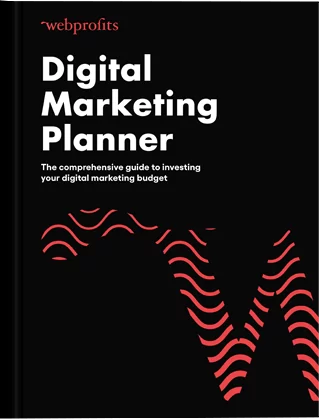
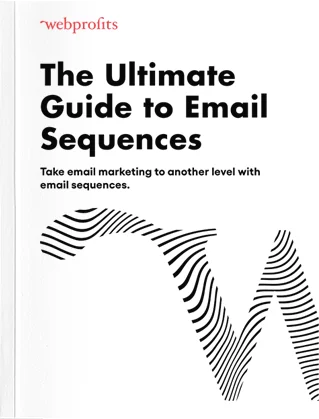
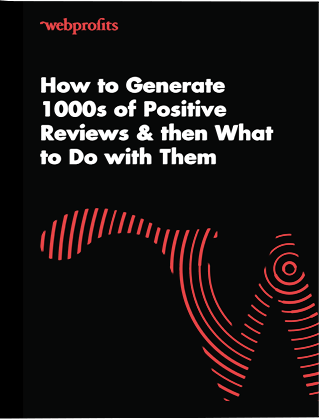
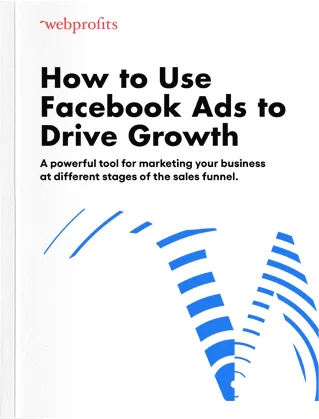
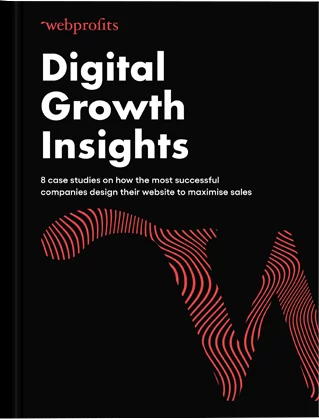
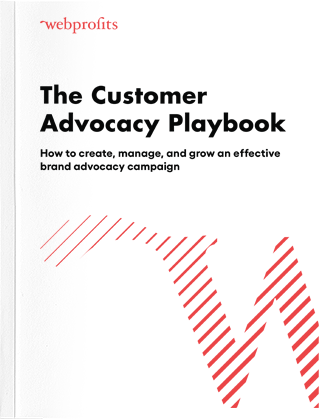
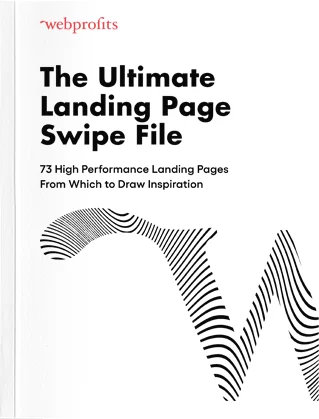

[…] marketing has a lot in common with content marketing. It’s all about the consumer, it’s all about delivering value beyond your product, it’s all […]